Inspired by an another question, I though of using image processing techniques to implement this simulation. Specifically we can use morphological dilation to spread the cancerous cells.
The idea is to dilate each pixel using a structuring element that looks like:
1 0 0
0 1 0
0 0 0
where the center is fixed, and the other 1 is placed at random at one of the other eight remaining positions. This would effectively extend the pixel in that direction.
The way the dilation is performed is by created a blank image, with only one pixel set, then accumulating all the results using a simple OR operation.
To speed things up, we don't need to consider every pixel, only those on the perimeter of the current blocks formed by the clusters of cancerous cells. The pixels on the inside are already surrounded by cancer cells, and would have no effect if dilated.
To speed even further, we perform the dilation on all pixels that are chosen to be extended in the same direction in one call. Thus every iteration, we perform at most 8 dilation operations.
This made the code relatively fast (I tested up to 1000x1000 grid). Also it maintains the same timing across all iterations (will not slow down as the grid starts to fill up).
Here is my implementation:
%# initial grid
img = false(500,500);
%# pick 10 random cells, and set them as cancerous
img(randi(numel(img),[10 1])) = true;
%# show initial image
hImg = imshow(img, 'Border','tight', 'InitialMag',100);
%# build all possible structing elements
%# each one dilates in one of the 8 possible directions
SE = repmat([0 0 0; 0 1 0; 0 0 0],[1 1 8]);
SE([1:4 6:9] + 9*(0:7)) = 1;
%# run simulation until all cells have cancer
BW = false(size(img));
while ~all(img(:)) && ishandle(hImg)
%# find pixels on the perimeter of all "blocks"
on = find(bwperim(img,8));
%# percentage chance of division
on = on( rand(size(on)) > 0.5 ); %# 50% probability of cell division
if isempty(on), continue; end
%# decide on a direction for each pixel
d = randi(size(SE,3),[numel(on) 1]);
%# group pixels according to direction chosen
dd = accumarray(d, on, [8 1], @(x){x});
%# dilate each group of pixels in the chosen directions
%# to speed up, we perform one dilation for all pixels with same direction
for i=1:8
%# start with an image with only those pixels set
BW(:) = false;
BW(dd{i}) = true;
%# dilate in the specified direction
BW = imdilate(BW, SE(:,:,i));
%# add results to final image
img = img | BW;
end
%# show new image
set(hImg, 'CData',img)
drawnow
end
I also created an animation of the simulation on a 500x500 grid, with 10 random initial cancer cells (warning: the .gif image is approximately 1MB in size, so may take some time to load depending on your connection)

